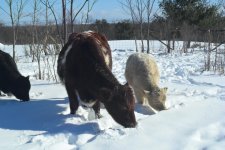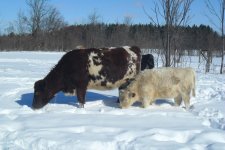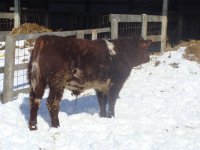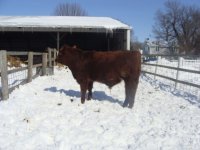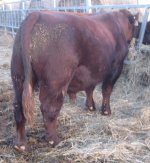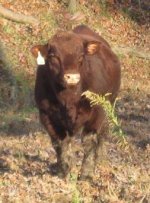i may not have the below completely correct, but anyway.
mmmmmmmm f f f f f f f f f f f f f f f f f f f f f f f f f f f f f f f f f f f f f f f f f f f f f f f f f f f f f f f f f mmmmmmmmmmmmm
f f f f f f f f f f f f mmmmmmmmmmmmmmmmmmmmmmmmmmmmmmmmmmmmmm f f f f f f f f f f f f f f f f f f f
mmmmmmmm f f f f f f f f f f f f f f f f f f f f f f f f f f f f f f f f f f f f f f f f f f f f f f f f f f f f f f f f f mmmmmmmmmmmmm
f f f f f f f f f f f f mmmmmmmmmmmmmmmmmmmmmmmmmmmmmmmmmmmmmm f f f f f f f f f f f f f f f f f f f
the above represents two chromosomes from two half sib parents where the f and m equal what was received from the previous parents, but one, the female is from a half sib mating, so the "f" is the "same", while the "m" is from a different sire, ie in this case one is attempting to concentrate the female. of course the "benefit" of the female may no be so beneficial in a homozygous state, but her offspring might be in the first generation. again, this is a good illustration that there are a lot of things going on with line breeding and why it's much easier to have "crossbred" cattle within a breed to take out this potential variability.
when the cross occurs, one could end up with
mmmmmmmm f f f f f f f f f f f f f f f f f f f f f f f f f f f f f f f f f f f f f f f f f f f f f f f f f f f f f f f f f f f f f f f f f f f f f f f f f f f f
f f f f f f f f f f f f f f f f f f f f f f f f f f f f f f f f f f f f f f f f f f f f f f f f f f f f f f f f f f f f f f f f f f f f f f f f f f f f f f f f f f f f f f f f
in this hypothetical, the IBC is potentially much higher than if there were more crossover events. multiply this effect over multiple chromosomes and multiple generations, and it's clear concurrent observations must be taken into effect, ie defects, and what one wants or doesn't want. it's also clear that one can get rid of stuff from an otherwise good animal, but keep the rest with rigorous culling. add in the possibility of methylation which may happen on one half of the chromosome but not the other is now very different than either one of the parents which may also account for variability. "superior" animals may in addition to depression or hybrid vigor may be the result of other regulatory pathways. to me, at this stage in genomics, it's not clear to me when we will figure this out, but it is clear to me that line breeding is ok as long as one understands that the first few generations will potentially be extremely variable, but that doesn't necessarily mean to get rid of the outliers, but to be more focused on what one wants in specific traits found lacking or to be gotten rid of.
to me, it's why buster should be line bred. hopefully someone will do it.

